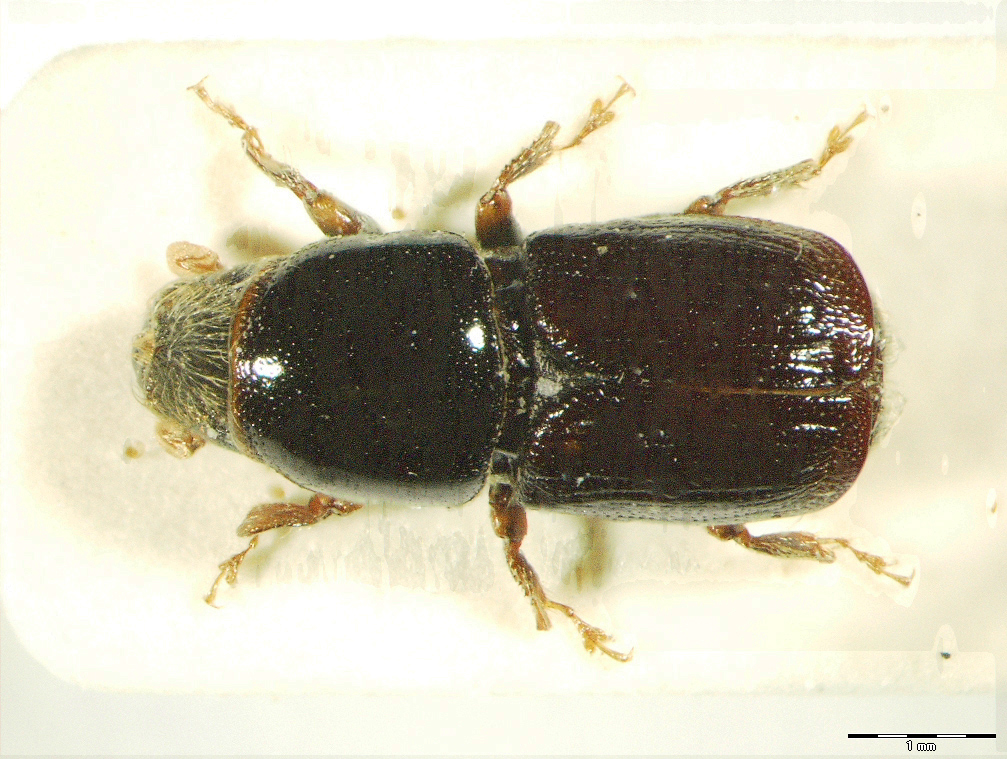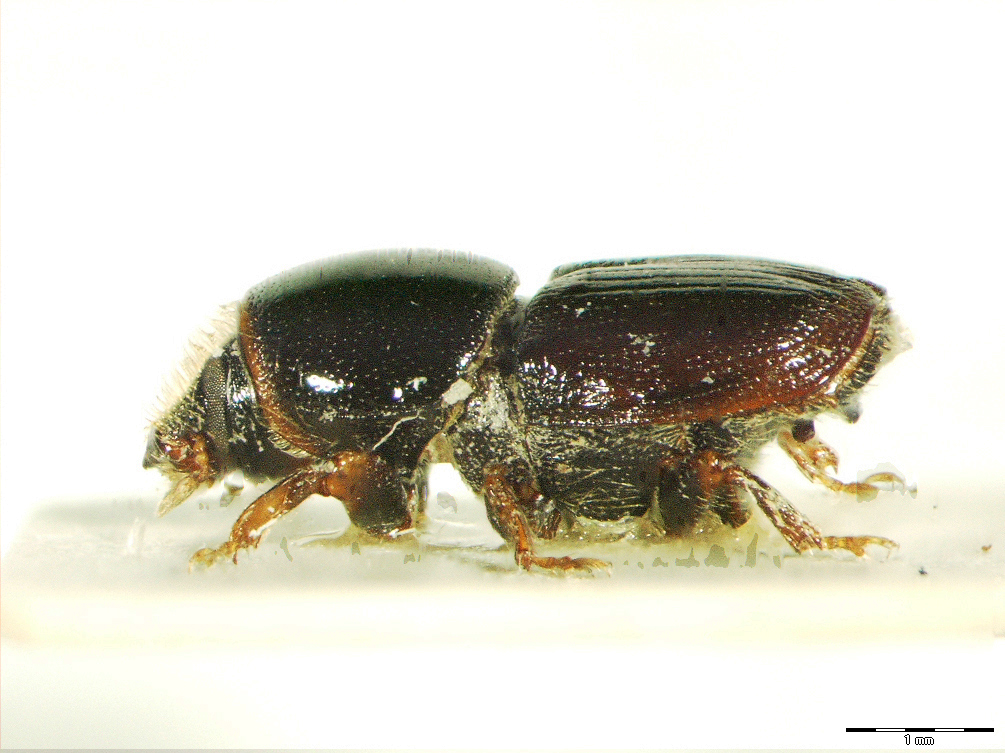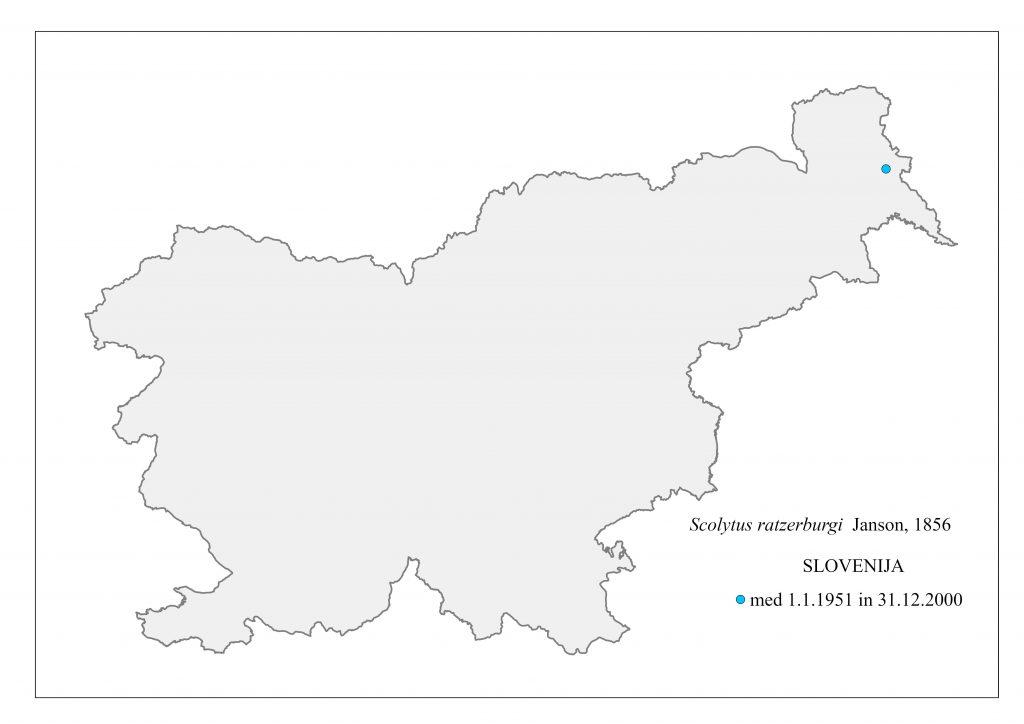32.07. Scolytus ratzeburgii (E. W. Janson, 1856)
Presence
E: AU BE BU BY CR CT CZ DE EN FI FR GB GE GR HU IT LA LT LU NL NR NT PL RO SK SL SP ST SV SZ YU »Caucasus«
A: ES FE HEI IN JA JIL KZ MG NC SC TR WS
Figure 160: Scolytus ratzeburgii, dorsal, lateral (Photo: Maja Jurc)
Older catalogs and keys – citations of name
Grüne 1979: Scolytus ratzeburgi Janson, 1856; Freude, Harde, Lohse 1981: Scolytus ratzeburgi Janson; Titovšek 1988: Scolytus ratzeburgi Janson; Pfeffer & Knížek 1993: S. ratzeburgii Janson, 1856; Pfeffer 1995: S. ratzeburgii Janson, 1856
Figure 161: Scolytus ratzeburgii, distribution map according to historical and recent data
Ecology and presence in Slovenia
The species is distributed in central and northern Europe, the European part of Russia, Siberia, Korea, Japan and China. It has only been recorded once in Slovenia, in Prekmurje in 1985 (Figure 161). Oligophagous species on birch, hosts are Betula pubescens, B. pendula, B. raddeana, B. dahurica, B. ermanii, B. platyphylla and B. costata. This phloemophagous, monogamous species has an annual generation, swarming in June and July. The materna tunnel system is uniramous, the longitudinal maternal gallery is up to 13 cm long, and has rounded openings for ventilation. The larval tunnels reaches a length of up to 25 cm. S. rugulosus is the largest Scolytus in Slovenia, with a length (adultus) of 4.0-6.5 mm. The abdomen ascends abruptly from the 2nd sternite towards the elytra. The male has a button-shaped protuberance on the 3rd sternite and a two-lobed swell on the 4th sternite (Figure 160). It colonises the canopy area and later the thick-trunked parts of the tree. Secondary species, that is supplementary feeding on young twigs.



